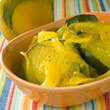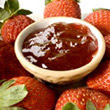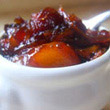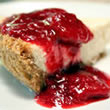Canning and Preserving
Canning and Preserving
Enjoy your harvest year-round by canning and preserving your summer bounty.
Fresh Flavors
Choose the freshest fruits and vegetables available, preferably picked that day. Going to U-pick farms, farmers' markets, or using fruits and vegetables from your own garden are great ways to ensure freshness. Avoid overripe or under-ripe fruits, which can affect the acidity and stability of the final product. Cucumbers, especially, need to be at their peak of freshness to make great pickles.
 |
Pectin
Pectin--an essential gelling agent--is found naturally in many fruits, such as apples, plums, and oranges. Most recipes call for added pectin, in either liquid or powdered form; there are also special pectins available for making low-sugar preserves. Jams and jellies made without pectin must be cooked longer, depending upon the amount of natural pectin in the fruit.
When making jams and jellies, make sure to use the proper ratio of sugar, acid, and pectin to achieve the right texture and flavor.
 |
Sweet and Sour
In preserving, acid provides flavor, texture, and helps prevent bacterial growth. Acid is also an important part of the fermentation process in pickle making.
In fruit preserves, lemon juice is typically used as the acid, while vinegar is more common in vegetable preserves.
Preserves made with low-acid foods must be processed in a pressure canner to prevent any bacteria from growing (see Pressure Canning below).
 |
Jars and Lids
To sterilize your jars, simmer them in a water bath for at least five minutes before using. Jars should stay hot until filled. You can reuse jars and rings from previous years as long as they are in good condition, but new lids must be used each time to ensure a good seal.
Inspect the rims of jars for any chips, as these will compromise your seal. Soak the lids in hot water for at least ten minutes to soften the rubber edge. This will help the lids grip the tops of the jars when you screw on the rings. Small jars are preferable, as large jars (over one quart) take longer to process--and since it takes longer for the heat to reach the center of the preserves, the outer layer can become overcooked.
 |
Filling Jars
Fill jars nearly to the top. The amount of "headspace" you need depends upon the recipe, so be sure to follow directions. For jams and jellies, it is usually 1/4-inch; fruit preserves and tomatoes need half an inch of headspace, and any low-acid foods that will be processed in a pressure canner will need one inch or more to account for expansion of the contents during processing.
- Run a thin spatula around the insides of the jars after they have been filled to remove air bubbles, and wipe the rims of the jars with a damp paper towel--any food residue on the rims could prevent a proper seal.
- Place the warm lids onto the rims and screw the rings into place firmly, but not as tightly as you can. The rubber seal on the lid will be soft from the warm water, so you don't want to crush it out of place. Rings can be tightened further once the jars have cooled.
Processing
Processing is the final step in the canning process. It seals your jars and sterilizes the contents. Most fruits and some vegetables can be processed in a hot water bath (low-acid foods should be pressure-canned).
- The water should cover the lids of the jars by one inch, and should be kept at a low simmer or just below the boiling point.
- Processing times vary based on acid levels and even your altitude.
- After processing, as the jars cool, the lids will become sunken in the center and you may hear a little "ping."
- If you can press down on the center of the lid and make it move, the jar is not properly sealed: refrigerate and consume within two weeks. You can also check the lid and jar rim for imperfections, reseal, and process again within 24 hours.
Pressure Canning
Foods with low acid levels, such as pumpkin, meats, and some vegetables, must be processed in a pressure canner. This method raises the temperature of the water bath and speeds up the process without damaging the food. Pressure canners are not the same as pressure cookers, so don't be tempted to use one! For more processing information, contact your agricultural extension office.
Storing
Store your jars away from direct sunlight in a cool, dry place. Food should be consumed within one year, although many items will not spoil for longer periods. If you see mold, discoloration, or smell something off, discard the contents immediately--but don't just trust your nose. Some bacteria can produce toxins that are undetectable by sight or smell, so if a jar's seal has been compromised, throw it away.
Safety
The science of preserving has come a long way. Many older canning methods--such as sealing jars with paraffin wax--have been determined unsafe.
Fortunately, every state has an agricultural extension office dedicated to the latest in food preservation and other home safety issues. West Virginia even provides community kitchens, so gardeners can do their canning while working with experts to ensure success!
Does the whole process of canning seem intimidating? Get your feet wet by starting with Freezer Jam or Refrigerator Pickles.
 |
